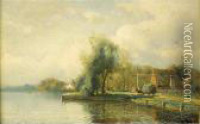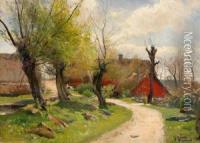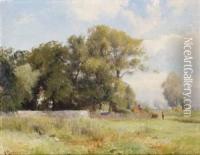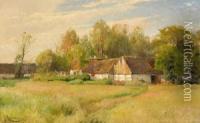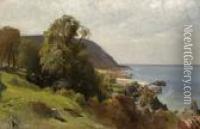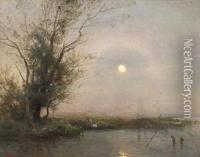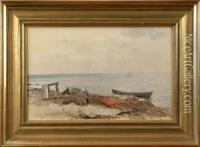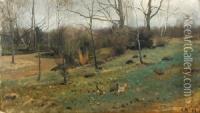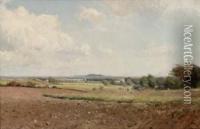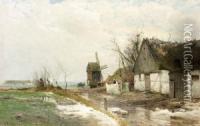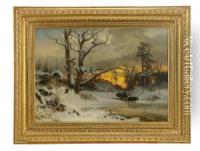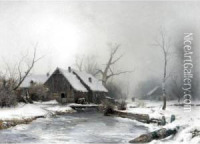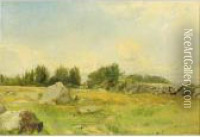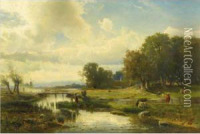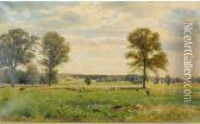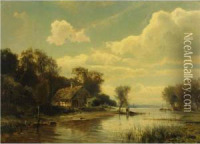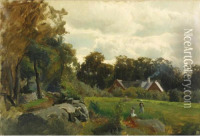Gustaf Rydberg Paintings
Gustaf Rydberg was a notable Swedish painter, born on March 14, 1835, in Skarhult, Sweden. He is primarily remembered for his landscape paintings, which often capture the serene and pastoral beauty of the Swedish countryside. Rydberg showed an early interest in art and began his formal training at the Royal Swedish Academy of Fine Arts in Stockholm, where he studied from 1855 to 1861.
During the 1860s, Rydberg traveled extensively throughout Europe, a common practice among artists of the time who sought to gain exposure to different styles and techniques. His travels took him to Germany, France, and Italy, among other countries, and these experiences influenced his artistic development. The encounter with various schools of painting enriched his palette and broadened his approach to landscape painting.
Upon returning to Sweden, Rydberg established himself as a prominent artist. He frequently exhibited his work and gained recognition for his ability to depict the changing seasons and the varying moods of nature with a poetic sensibility. His paintings often feature rural settings, with carefully rendered details of trees, fields, and skies that reflect his deep appreciation for the natural environment.
Rydberg's contributions to Swedish art were not limited to his own creations; he was also a respected teacher and mentor to younger artists. His career as an educator included a long tenure at the Technical School in Malmö, where he influenced a generation of Swedish painters.
Gustaf Rydberg's work is characterized by a refined realism, a subtle use of color, and a tranquil atmosphere. His landscapes are considered an important part of the national romantic movement in Sweden, which emphasized a deep connection to the native land and culture.
Rydberg continued to paint well into his later years, maintaining a prolific output. He passed away on October 21, 1933, in Malmö, at the age of 98. Today, his art can be seen in museums across Sweden and is celebrated for its enduring beauty and its evocative portrayal of the Swedish landscape. Rydberg's legacy lives on as an artist who captured the essence of his homeland with grace and sensitivity.
